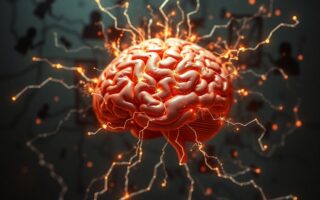Anxiety Attack vs. Panic Attack: Understanding the Differences
Anxiety attacks and panic attacks are often used interchangeably, but they represent distinct experiences with unique characteristics. In this comprehensive guide, we’ll delve into the differences between anxiety attacks and panic attacks, including their symptoms, triggers, and management strategies.
1. Symptoms of Anxiety Attacks
- Gradual Onset: Anxiety attacks typically have a gradual onset, with symptoms building up over time in response to stressors or triggers. Individuals may experience a sense of apprehension, worry, or unease that intensifies gradually.
- Physical Symptoms: Physical symptoms of anxiety attacks may include increased heart rate, sweating, trembling, muscle tension, and gastrointestinal discomfort. These symptoms are often milder compared to those experienced during panic attacks and may be more localized or specific to certain situations.
- Cognitive Symptoms: Cognitive symptoms of anxiety attacks may involve racing thoughts, difficulty concentrating, irritability, and hypervigilance. Individuals may experience excessive worry or fear about specific situations or future events, leading to heightened anxiety levels.
- Duration: Anxiety attacks typically last for a shorter duration compared to panic attacks, ranging from a few minutes to several hours. The intensity of symptoms may fluctuate over time, depending on the individual’s level of distress and the effectiveness of coping strategies.
2. Symptoms of Panic Attacks
- Sudden Onset: Panic attacks are characterized by a sudden and intense onset of symptoms, often without warning or apparent trigger. Individuals may experience a rapid escalation of physical and cognitive symptoms, leading to overwhelming feelings of fear or impending doom.
- Severe Physical Symptoms: Physical symptoms of panic attacks may include chest pain, shortness of breath, dizziness, numbness or tingling sensations, and feelings of choking or suffocation. These symptoms can be severe and may mimic those of a heart attack, leading to heightened distress and fear of losing control.
- Cognitive Symptoms: Cognitive symptoms of panic attacks may involve feelings of unreality or detachment from oneself or the surroundings, known as derealization or depersonalization. Individuals may also experience intense fear of dying, going crazy, or losing control during a panic attack.
- Duration: Panic attacks typically peak within a few minutes and subside gradually over the course of several minutes to hours. However, the residual effects of a panic attack, such as feelings of exhaustion or emotional distress, may persist for an extended period afterward.
3. Triggers and Precipitating Factors
- Anxiety Attack Triggers: Anxiety attacks may be triggered by specific stressors or situations that provoke feelings of anxiety or apprehension. Common triggers for anxiety attacks include work-related stress, social situations, financial worries, relationship conflicts, or health concerns.
- Panic Attack Triggers: Panic attacks often occur unexpectedly and may not have an identifiable trigger. However, certain factors such as high levels of stress, caffeine or stimulant use, substance withdrawal, or phobic stimuli (e.g., enclosed spaces, crowds) may increase the likelihood of experiencing a panic attack.
4. Management Strategies
- Anxiety Attack Management: Managing anxiety attacks involves identifying triggers, practicing relaxation techniques (e.g., deep breathing, progressive muscle relaxation), challenging negative thoughts through cognitive-behavioral therapy (CBT), and seeking support from mental health professionals or support groups.
- Panic Attack Management: Coping with panic attacks may involve utilizing grounding techniques (e.g., focusing on sensory experiences), practicing mindfulness and acceptance, learning panic control techniques (e.g., controlled breathing), and seeking professional help for underlying anxiety disorders.
Conclusion
While anxiety attacks and panic attacks share similarities in terms of symptoms and triggers, they represent distinct experiences with different onset patterns, severity, and duration. Understanding the differences between anxiety attacks and panic attacks is crucial for accurate diagnosis, effective management, and appropriate intervention. By recognizing the unique characteristics of each type of attack, individuals can develop personalized coping strategies to address their specific needs and improve their overall well-being. If you or someone you know experiences frequent or severe anxiety or panic attacks, consider seeking support from a qualified mental health professional for comprehensive assessment and treatment.
“`html| Feature | Anxiety Attack | Panic Attack |
|---|---|---|
| Onset | Gradual | Sudden |
| Physical Symptoms | Milder, gradual | Severe, sudden |
| Cognitive Symptoms | Racing thoughts, worry | Feelings of unreality, fear of dying |
| Duration | Shorter, minutes to hours | Peak within minutes, gradual subsiding |
| Triggers | Specific stressors | May occur unexpectedly |
| Management | Identify triggers, relaxation techniques | Grounding techniques, panic control |
Aanxiety attack vs panic attack FAQs
FAQs about Anxiety Attacks and Panic Attacks:
- What causes anxiety attacks and panic attacks? Anxiety attacks can be triggered by stress, trauma, or specific phobias, while panic attacks may occur unexpectedly or in response to perceived threats.
- Are anxiety attacks and panic attacks the same thing? While they share similarities, anxiety attacks tend to build up gradually and are often triggered by stressors, whereas panic attacks come on suddenly and may feel more intense.
- How long do anxiety attacks and panic attacks last? Anxiety attacks typically last for a shorter duration, ranging from minutes to hours, while panic attacks peak within minutes but may subside gradually.
- What are the physical symptoms of anxiety attacks and panic attacks? Physical symptoms of anxiety attacks may include rapid heartbeat, sweating, and trembling, whereas panic attacks can cause chest pain, shortness of breath, and dizziness.
- Can anxiety attacks and panic attacks be treated? Yes, both anxiety attacks and panic attacks can be managed through therapy, medication, and lifestyle changes. Seeking professional help is recommended for effective treatment.
- Are there specific triggers that can cause anxiety attacks or panic attacks? Certain situations, environments, or stressors may act as triggers for individuals experiencing anxiety attacks or panic attacks.
- What are the psychological symptoms of anxiety attacks and panic attacks? Psychological symptoms may include feelings of fear, impending doom, detachment from reality, or a sense of losing control.
- Can anxiety attacks and panic attacks occur together? It’s possible for individuals to experience both anxiety attacks and panic attacks, and they may occur in conjunction with each other.
- Do anxiety attacks and panic attacks require medical attention? While not life-threatening, severe or frequent anxiety attacks or panic attacks may warrant medical evaluation to rule out underlying conditions and receive appropriate treatment.
- How can one differentiate between an anxiety attack and a panic attack? Understanding the differences in symptoms, triggers, and duration can help distinguish between anxiety attacks, which may be more gradual, and panic attacks, which tend to be sudden and intense.
- Can lifestyle changes help prevent anxiety attacks and panic attacks? Adopting stress-reduction techniques, maintaining a healthy lifestyle, and seeking support from friends and family may help mitigate the frequency and severity of anxiety attacks and panic attacks.
- What role does medication play in managing anxiety attacks and panic attacks? Medications such as antidepressants, anti-anxiety drugs, or beta-blockers may be prescribed by healthcare professionals to help alleviate symptoms and manage anxiety or panic disorders.
- Are there alternative therapies or self-help strategies for coping with anxiety attacks and panic attacks? Techniques such as mindfulness, deep breathing exercises, progressive muscle relaxation, and cognitive-behavioral therapy (CBT) can be beneficial in managing anxiety and panic symptoms.














